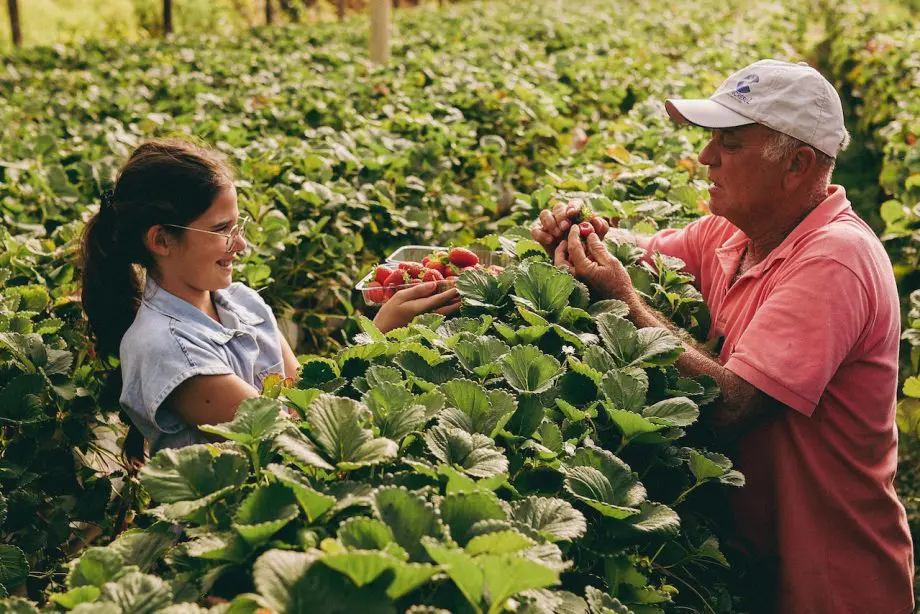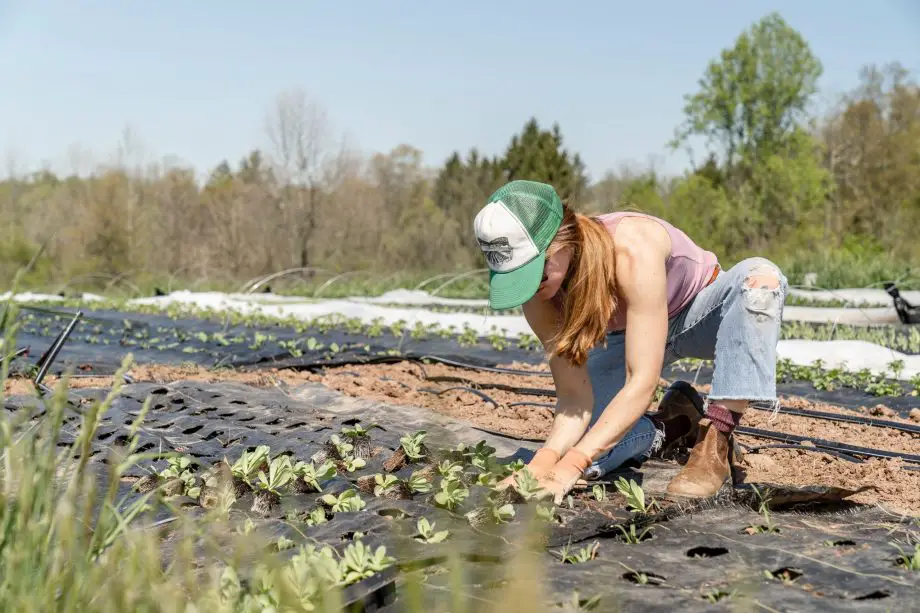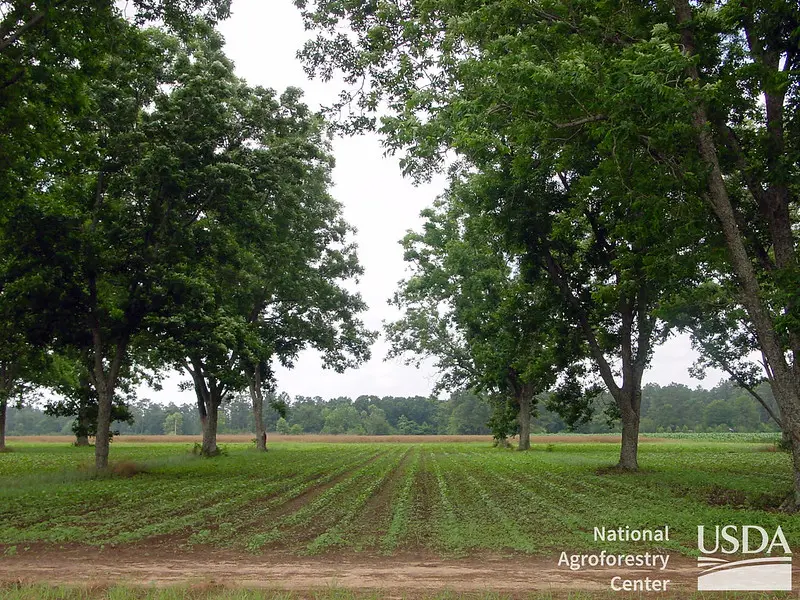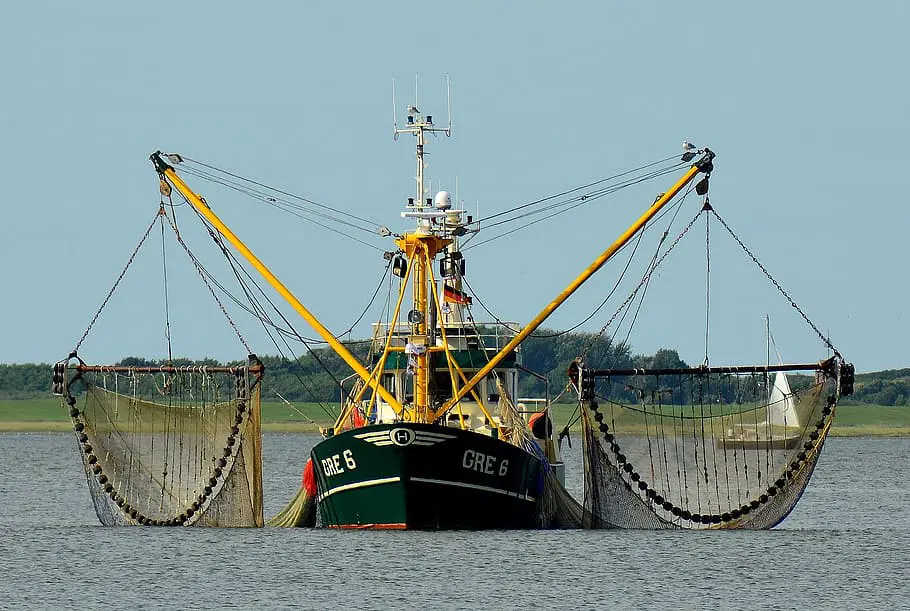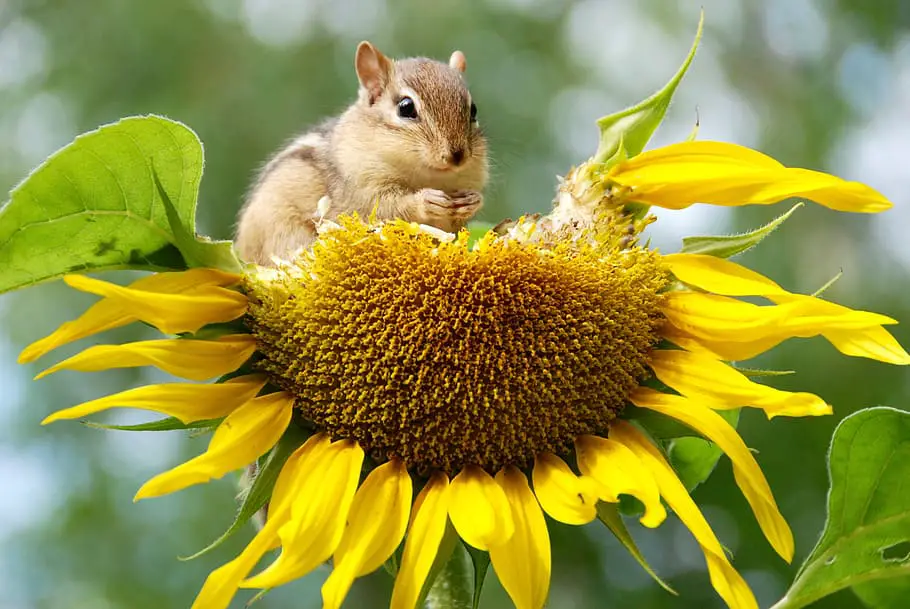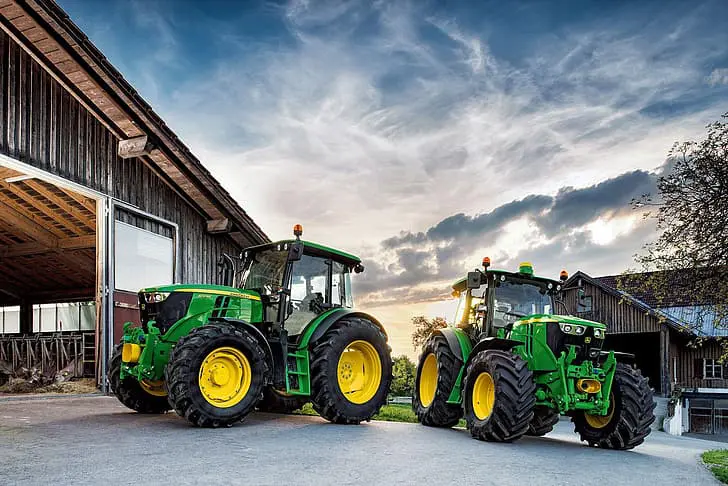 Explore the benefits of green energy in agriculture and how it’s shaping a sustainable future for farmers and the environment. Join the green revolution!
Explore the benefits of green energy in agriculture and how it’s shaping a sustainable future for farmers and the environment. Join the green revolution!
The benefits of green energy in agriculture are more than just a trend; they’re a revolution in how we grow our food and care for our planet.
From wind turbines gently turning on the horizon to solar panels soaking up the sun, renewable energy is transforming farms across the globe.
It’s about more than just cutting costs; it’s a partnership with nature that nurtures the soil, the economy, and our future.
So, grab a cup of tea, and let’s dig into this exciting world of green energy in farming!
The Benefits Of Green Energy In Agriculture
The benefits of green energy in agriculture are opening new horizons for farmers and environmental enthusiasts alike.
In this post, we’ll explore how renewable energy sources like wind, solar, and biomass are not only powering our farms but also enriching the soil and boosting the economy.
We’ll delve into government initiatives that support this green movement, the tangible economic gains for farmers, and the positive impact on our planet.
Whether you’re a farmer, a green energy advocate, or just curious about sustainable practices, this journey through the fields of green energy promises to be enlightening!
Definition of Green Energy
Green energy, my friend, is like a breath of fresh air in a smog-filled city. It’s all about harnessing natural forces like the sun, wind, and even plants to generate power.
Imagine turning a sunny day or a breezy afternoon into electricity for your home or farm. That’s green energy for you!
It’s renewable, clean, and doesn’t leave behind harmful emissions. It’s like Mother Nature’s gift to us, a way to power our lives without harming our beautiful planet.
Importance in Agriculture
Now, let’s talk about why green energy is such a big deal in agriculture.
Think of a farm as a big, complex machine that needs fuel to run. Traditional fuels can be expensive and pollute the environment.
But with green energy, farmers can tap into the sun, wind, or biomass to power their operations.
It’s like turning your farm into a self-sustaining ecosystem. You’re not just growing crops; you’re growing energy too!
And the best part? It helps in reducing costs, conserving resources, and making farming more sustainable. It’s a win-win for farmers and the Earth.
Overview of Benefits
So, what’s in it for us? The benefits of green energy in agriculture go beyond just the farm gate.
For starters, it’s a fantastic way to cut down on those pesky utility bills. Imagine saving money while doing something good for the planet!
But there’s more. By embracing renewable energy, farmers are also contributing to reducing greenhouse gas emissions, preserving natural resources, and even creating new jobs in the green energy sector.
It’s like planting a seed that grows into a tree, providing shade, clean air, and even fruit for generations to come.
The ripple effect of green energy in agriculture reaches far and wide, touching not just farmers but all of us in many positive ways.
Renewable Energy and Agriculture: A Natural Fit
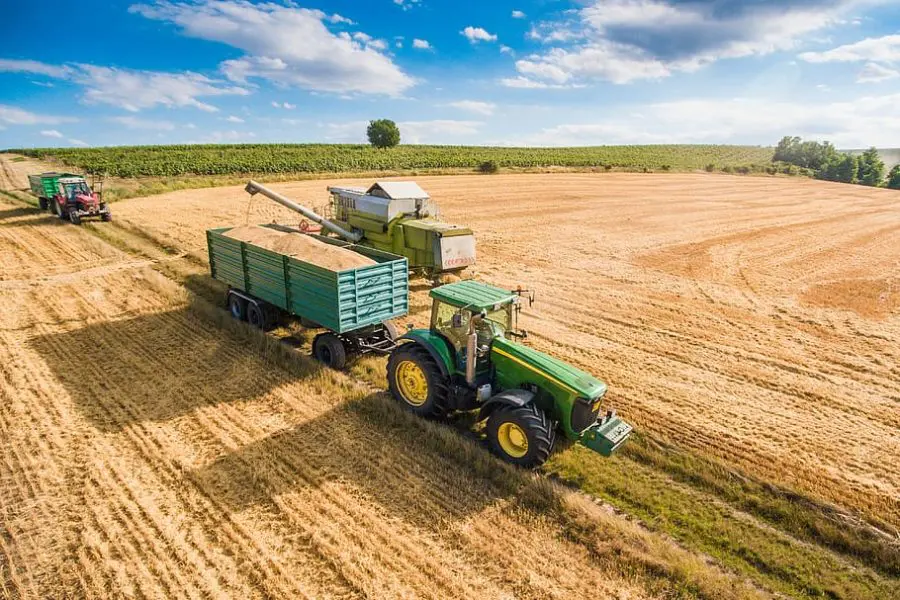
Renewable Energy and Agriculture: A Natural Fit? You bet! It’s like pairing a fine wine with the perfect cheese; they just go together.
In the world of farming, renewable energy sources like wind, solar, and biomass are becoming the best companions to traditional agricultural practices.
They’re not just alternatives; they’re partners in a dance that’s all about sustainability and harmony with nature.
From harnessing the wind that sweeps across the plains to capturing the sun’s rays that nourish the crops, renewable energy is fitting into agriculture like a hand in a glove.
Let’s explore how this beautiful partnership is blossoming and changing the way we farm.
Wind Power
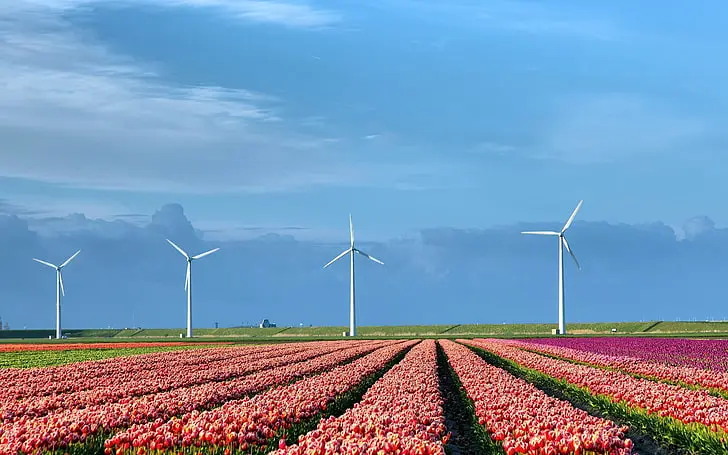
Wind Power, now that’s something to talk about! Picture this: a field of golden wheat swaying in the breeze, and on the horizon, majestic wind turbines spinning gracefully.
It’s not just a scene from a futuristic movie; it’s happening right now on farms around the world.
Wind power is like the gentle giant of renewable energy, turning the invisible force of the wind into something tangible and useful.
For farmers, it’s a chance to catch the wind and turn it into a valuable ally.
Let’s dive into how wind power has been used historically, the modern marvel of wind turbines, and the economic benefits that are blowing everyone away!
Historical Usage
Wind power isn’t some new-fangled invention; it’s been around for centuries! Remember those charming windmills in old paintings and storybooks?
They were the pioneers of wind energy. Farmers used them to grind grain and pump water long before electricity was a household name.
It’s like taking a page from history and realizing that our ancestors were onto something big.
They saw the wind not as an invisible force but as a powerful ally in their daily lives. It’s a legacy that’s still blowing strong today!
Modern Wind Turbines
Fast forward to today, and those quaint windmills have evolved into sleek and powerful wind turbines.
Imagine a jet engine on a stick, towering over the landscape, capturing the wind’s energy.
These modern marvels are like the smartphones of renewable energy – efficient, smart, and packed with technology.
They can generate enough power to run entire farms and even feed extra energy back into the grid.
And the best part? They coexist with the crops, allowing farming to continue right up to their base.
It’s innovation and tradition working hand in hand, a perfect blend of the old and the new.
Economic Benefits
Now, let’s talk about something everyone loves: saving money! Wind power is like having a sale on electricity that never ends.
Once the turbines are up and running, the wind is free, and the savings start blowing in.
Farmers can reduce their energy bills or even make money by selling excess power back to the grid.
It’s like having a side business that complements the farm.
And let’s not forget the jobs created in manufacturing, installing, and maintaining these turbines.
Wind power isn’t just a breeze; it’s a gust of economic opportunity that’s sweeping across the agricultural landscape.
Biomass Energy
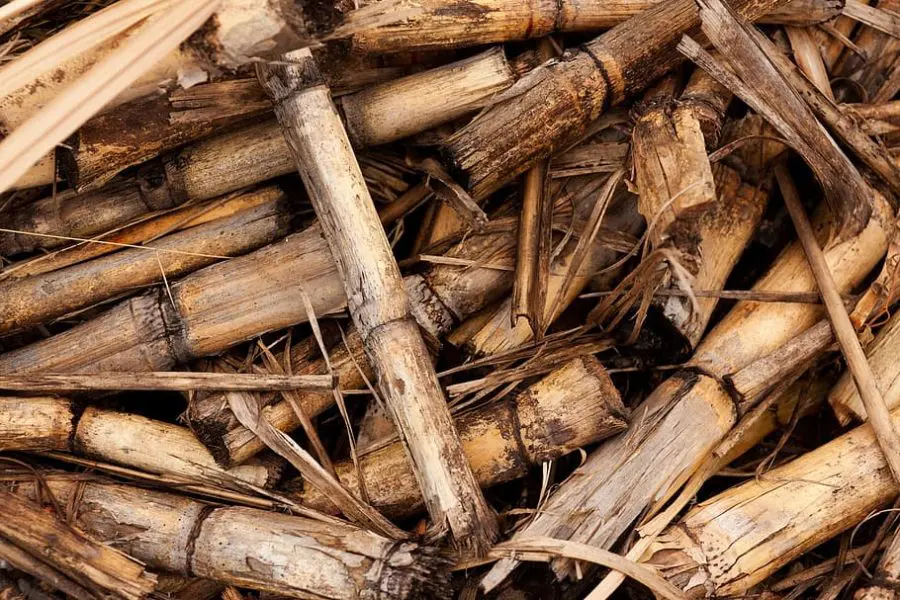
Biomass Energy, now there’s a term that might sound a bit scientific, but it’s actually quite down-to-earth.
Imagine taking the leftovers from your farm, like corn stalks or manure, and turning them into energy.
It’s like recycling on a grand scale, where nothing goes to waste. Biomass energy is all about using organic materials to create power, heat, and even fuel.
It’s farming’s way of giving back to the environment and creating a sustainable loop where everything has a purpose.
So, grab your farmer’s hat, and let’s dig into the world of biomass energy, where the sources are as natural as the soil and the benefits grow right on the farm!
Sources of Biomass
So, where does all this biomass energy come from? It’s like a treasure hunt on the farm, finding valuable energy in places you might not expect.
Crop residues, animal manure, wood chips, and even food waste can be turned into energy.
Imagine taking what’s left after harvest, stuff that might otherwise be thrown away, and turning it into something useful.
It’s like cooking a delicious meal and using every part of the ingredients, leaving nothing to waste.
That’s the beauty of biomass energy; it finds value in the everyday things around the farm.
Sustainability
Sustainability is a big word with an even bigger meaning, especially when it comes to biomass energy.
It’s like planting a garden and making sure it thrives year after year. By using organic materials to create energy, we’re not just taking from the Earth; we’re giving back.
It’s a cycle that replenishes the soil, reduces dependence on fossil fuels, and promotes a balanced ecosystem.
Think of it as a handshake with nature, a pact to work together and nurture the land we all share.
Biomass energy isn’t just a solution for today; it’s a promise for a greener tomorrow.
Economic Impact
Let’s talk dollars and cents, shall we? Biomass energy is not just good for the Earth; it’s good for the wallet too.
By turning waste into energy, farmers can cut costs and even create new revenue streams.
It’s like finding money in your old coat pocket, a pleasant surprise that adds up over time.
And don’t forget the jobs created in collecting, processing, and converting biomass into energy.
It’s an industry that’s growing like a well-tended crop, providing opportunities for communities and boosting local economies.
Biomass energy is more than a renewable energy source; it’s an investment in the future of farming and the prosperity of people.
Solar Energy
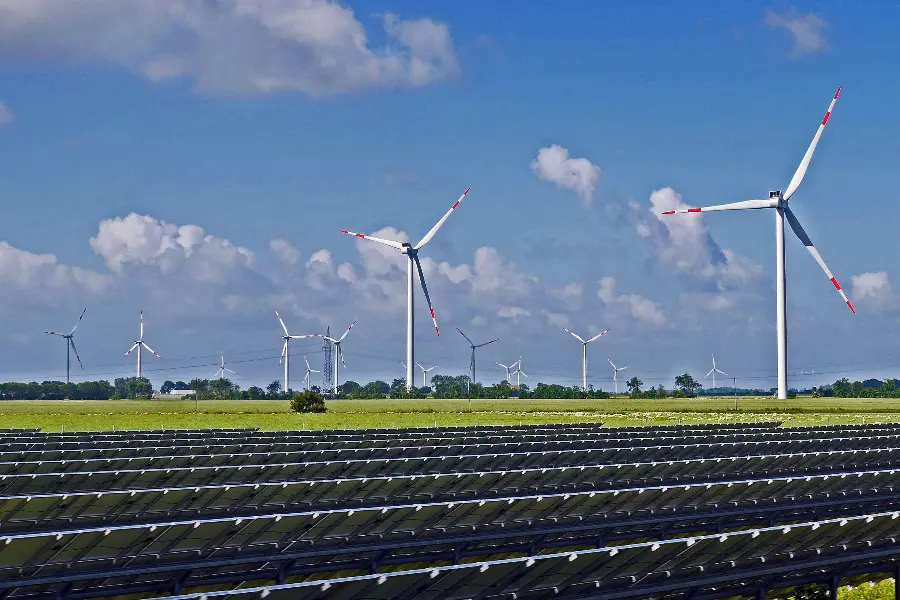
Solar Energy in agriculture? Now that’s a bright idea!
Picture this: vast fields not just nurturing crops but also harnessing the power of the sun.
It’s like giving your farm a sunbath, turning those golden rays into electricity.
From powering irrigation systems to lighting up barns, solar energy is the silent, clean, and ever-reliable workhorse on the modern farm.
And the best part? The sun doesn’t send a monthly bill.
Let’s dive into the world of solar energy, where the sun meets the soil, and discover how it’s revolutionizing the way we farm!
Solar Heat Collectors
Let’s kick things off with solar heat collectors. Imagine them as nature’s own heaters, capturing the sun’s warmth and using it directly to heat water or air.
It’s like laying out a towel in the sun, feeling it warm up, and then wrapping yourself in its cozy embrace.
For farmers, these collectors can be a game-changer, providing hot water for barns or greenhouses without burning a hole in the pocket.
It’s a simple, efficient, and eco-friendly way to tap into the sun’s abundant energy. Think of it as giving your farm a warm hug, courtesy of the sun!
Photovoltaics
Next up, photovoltaics, or as they’re commonly known, solar panels.
These are like the wizards of the solar world, magically converting sunlight directly into electricity.
Picture them as silent, diligent workers, sitting atop barn roofs or alongside fields, soaking up the sun and powering everything from water pumps to machinery.
It’s like having a mini power plant right on your farm, one that runs on sunshine and dedication.
And the beauty of photovoltaics? They’re low maintenance, long-lasting, and a testament to human ingenuity.
It’s farming in harmony with nature, one solar cell at a time.
Natural Daylight Usage
Lastly, let’s talk about the simplest and most elegant use of solar energy: natural daylight usage.
It’s like opening the curtains and letting the sunshine flood in, illuminating spaces without the flick of a switch.
For farmers, this means designing barns, greenhouses, and other structures to make the most of natural light.
It reduces the need for artificial lighting, saves on electricity bills, and creates a pleasant, sunlit environment.
It’s a gentle reminder that sometimes, the best solutions are the most natural ones.
Embracing natural daylight is like giving a nod to the sun, acknowledging its role in nurturing both crops and spirits.
Government Initiatives and Support
Government Initiatives and Support for green energy in agriculture? Now, that’s a partnership worth exploring!
Imagine the government as a supportive neighbor, lending a hand to farmers who want to go green.
From grants to policies, there’s a whole toolbox of support available to help farmers embrace renewable energy.
It’s like having a friend who shares your passion for sustainability and is willing to invest in your success.
Whether it’s federal incentives or state-level programs, the government is stepping up to make green energy a viable and attractive option for farmers.
Let’s take a closer look at how this collaboration is sowing the seeds for a greener future in agriculture!
Federal Incentives
Let’s start with the big picture: federal incentives. Think of the federal government as a generous relative who wants to see you succeed in your green energy endeavors.
They offer grants, tax credits, and even low-interest loans to help farmers invest in renewable energy.
It’s like getting a financial pat on the back for doing something good for the environment.
Whether it’s installing solar panels or building a wind turbine, there’s support available to make it more affordable.
It’s the government’s way of saying, We believe in what you’re doing, and we’re here to help!
State Policies
Now, let’s zoom in a bit closer to home with state policies. Each state is like a unique member of a big, diverse family, and they have their own ways of supporting green energy in agriculture.
Some states offer additional grants or rebates, while others provide technical assistance or favorable regulations.
It’s like having a local friend who knows the lay of the land and offers tailored support.
These state-level initiatives complement the federal incentives, creating a network of support that reaches every corner of the farming community.
It’s a team effort that makes going green not just a dream but a reachable goal for farmers across the nation.
Renewable Energy for Agriculture Program (REAP)
The Renewable Energy for Agriculture Program (REAP), now that’s something special!
Imagine a program designed just for farmers, focusing on helping them embrace renewable energy and energy efficiency.
It’s like having a personal coach guiding you through the world of green energy, offering financial assistance, technical support, and a friendly push in the right direction.
Whether you’re a seasoned farmer or just starting to explore renewable energy, REAP is there to make the journey smoother and more rewarding.
Let’s dive into the details of this fantastic program and see how it’s planting the seeds of change in the agricultural landscape!
Grants and Opportunities
The Renewable Energy for Agriculture Program (REAP) is like a treasure chest filled with grants and opportunities for farmers.
Imagine having access to funds that can help you install solar panels, build a wind turbine, or even improve energy efficiency on your farm.
It’s like a golden ticket to a greener future, making renewable energy more accessible and affordable.
And it’s not just about the money; there’s also technical support and guidance available.
It’s like having a wise friend who’s been down the green energy road before and is willing to share their knowledge and experience.
With REAP, the path to renewable energy is well-lit and filled with possibilities.
Goals and Objectives
Now, let’s talk about the why behind REAP. The goals and objectives of this program are like the compass guiding its efforts.
It’s not just about throwing money at a problem; it’s about creating a sustainable and positive change in agriculture.
The focus is on reducing greenhouse gas emissions, supporting rural communities, and promoting energy independence.
It’s like building a bridge between today’s needs and tomorrow’s dreams, ensuring that the future of farming is bright, green, and sustainable.
REAP’s vision goes beyond the farm gate, aiming to create a ripple effect that benefits the entire community and the environment.
It’s a mission driven by passion, purpose, and a genuine desire to make a difference.
Economic Benefits for Farmers

Economic Benefits for Farmers through green energy? Now, that’s a topic that can make any farmer’s ears perk up!
Imagine turning the power of the sun, wind, or plants into savings and even profits on your farm.
It’s like finding a hidden stream of income right on your land. Renewable energy isn’t just about being eco-friendly; it’s also about being wallet-friendly.
From cutting down on energy bills to creating new revenue streams, the economic benefits are as real as the crops in the field.
So, let’s put on our financial thinking caps and explore how going green can put more green in your pocket!
Income from Wind Energy
Let’s catch the wind and turn it into cash! Wind energy is like a generous friend that keeps on giving.
By installing wind turbines on your farm, you’re not just generating power for your own use; you can also sell the excess back to the grid.
It’s like having a side business that works in harmony with your farming.
The wind blows, the turbines spin, and the money flows into your account.
And the best part? The wind is free, and the income is steady. It’s a breeze that can bring financial stability and growth to your farm.
Savings from Solar Energy
Now, let’s turn our faces to the sun and bask in the savings from solar energy.
Imagine your farm soaking up the sun’s rays and turning them into electricity. It’s like having a personal power plant that runs on sunshine.
By installing solar panels, you can drastically reduce or even eliminate your energy bills.
It’s like clipping coupons for electricity, except the savings never expire.
And don’t forget the potential tax credits and incentives that can make the initial investment even more affordable.
Solar energy isn’t just a bright idea; it’s a shining opportunity to save money and invest in a sustainable future.
Biomass as a Cash Crop
Biomass energy, now that’s a creative way to turn farming into a more profitable venture.
Think of biomass as a cash crop that grows right alongside your regular crops.
By using agricultural waste like corn stalks or animal manure, you can create energy and even sell it. It’s like turning leftovers into a gourmet meal, finding value in what might otherwise be wasted.
And it’s not just about making money; it’s about creating a sustainable loop that benefits the farm and the environment.
Biomass energy is like planting a seed of innovation that can grow into a thriving and profitable part of your farming business.
Environmental Impact

Environmental Impact of green energy in agriculture, now that’s where things get truly exciting!
Imagine your farm not just as a place to grow food but as a guardian of the Earth.
By embracing renewable energy, you’re not just saving money; you’re saving the planet too.
It’s like joining a global team of eco-warriors, fighting pollution, global warming, and dependence on fossil fuels.
From the wind that turns turbines to the sun that powers solar panels, every green step you take has a positive ripple effect on the environment.
Let’s explore how going green on the farm is like planting seeds for a healthier, happier world!
Reduction in Pollution
Let’s start with something we all care about clean air and water. By using renewable energy on the farm, you’re cutting down on pollution like a gardener pruning away dead branches.
Traditional energy sources can release harmful emissions, but green energy is clean and pure.
It’s like choosing organic produce over something sprayed with chemicals.
The result? Healthier soil, cleaner water, and fresher air. It’s a choice that benefits not just your farm but the entire community and ecosystem. It’s a breath of fresh air in a world that needs it!
Mitigation of Global Warming
Now, let’s talk about something a bit hotter: global warming.
By embracing renewable energy, you’re doing your part to cool things down.
It’s like planting trees that absorb carbon dioxide, except you’re using wind, sun, or biomass to reduce greenhouse gas emissions.
Every kilowatt-hour of green energy used is a step towards a cooler and more stable climate.
It’s a global effort, and your farm can be a part of the solution. Think of it as casting a vote for a healthier planet, one renewable energy source at a time.
Dependence on Imported Fuels
Lastly, let’s discuss something close to home: dependence on imported fuels.
By using renewable energy, you’re not just saving the planet; you’re also supporting your country.
It’s like buying local produce instead of imported goods.
You’re reducing dependence on foreign oil and investing in domestic energy sources.
It’s a patriotic choice that strengthens the economy and enhances energy security.
Imagine your farm as a fortress of self-reliance, powered by the sun, wind, or plants, standing strong and independent.
It’s a powerful statement that green energy is not just an environmental choice; it’s a national one too.
Challenges and Solutions
Challenges and Solutions in the world of green energy in agriculture, now that’s a road worth traveling!
Like any great adventure, the journey toward renewable energy has its ups and downs, twists and turns.
It’s not all sunshine and breezy days and there are real challenges to face.
But for every challenge, there’s a creative solution waiting to be discovered.
It’s like solving a puzzle, finding the right pieces to make the picture complete.
From technological hurdles to economic barriers, let’s explore the challenges and the innovative solutions that are turning obstacles into opportunities.
Buckle up, and let’s hit the road to a greener future!
Technological Challenges
First up on our journey are the technological challenges. Imagine trying to bake a cake with an outdated oven, while it’s doable it’s tricky.
Similarly, adopting renewable energy on the farm might require new equipment, expertise, and sometimes even a bit of trial and error.
It’s like learning a new dance; it takes time and practice. But the good news? Technology is advancing rapidly, and there are experts, guides, and resources available to help.
It’s a challenge that’s turning into an opportunity, with innovation and creativity leading the way.
The future of green technology is bright, and it’s getting brighter every day!
Economic Barriers
Next, let’s talk about money, or rather, the economic barriers that might stand in the way.
Investing in renewable energy can feel like buying a new tractor; it’s a big decision with a hefty price tag.
But here’s the silver lining: there are grants, incentives, and financing options available.
It’s like finding a sale just when you need it! Plus, the long-term savings and potential income from renewable energy can turn that initial investment into a wise financial move.
It’s a barrier that’s becoming a gateway to a more prosperous and sustainable farm.
Policy and Regulatory Framework
Lastly, let’s navigate the maze of policy and regulatory framework.
It might sound complicated, but it’s like learning the rules of a new game.
Different places have different regulations, permits, and standards when it comes to renewable energy.
It might seem daunting at first, but there’s help available. Government agencies, industry associations, and even fellow farmers can guide you through the process.
It’s a challenge that’s turning into a pathway, with clear signs and support along the way.
The road to renewable energy might have a few bumps, but with the right guidance, it’s a journey worth taking!
Green Energy In Agriculture FAQs

FAQs about green energy in agriculture? You bet! It’s like sitting down for a friendly chat over a cup of coffee, answering those burning questions that have been on your mind.
From understanding the goals of specific programs to exploring how renewable energy can reduce greenhouse gas emissions, these FAQs are here to shed light on the intriguing world of green energy in farming.
Whether you’re a seasoned farmer, a curious consumer, or someone just dipping their toes into renewable energy, these answers are tailored for you.
So, pull up a chair, and let’s dive into the questions that are sparking conversations across the agricultural community!
Q: What is the primary goal of REAP?
A: The Renewable Energy for Agriculture Program (REAP) is like a guiding star for farmers wanting to go green.
Its primary goal is to support agricultural producers and rural small businesses in adopting renewable energy and improving energy efficiency.
Think of it as a helping hand, offering financial assistance, technical guidance, and a friendly push towards a more sustainable and energy-independent future.
It’s all about empowering farmers to embrace green energy and reap the benefits for years to come.
Q: How can renewable energy reduce greenhouse gas emissions in agriculture?
A: Renewable energy reducing greenhouse gas emissions is like planting trees to soak up carbon dioxide.
By using clean energy sources like wind, solar, and biomass, agriculture can reduce its reliance on fossil fuels, which emit harmful greenhouse gases.
It’s a switch from the old to the new, replacing polluting energy with clean, green alternatives.
Imagine your farm as a cleaner, greener place, contributing to a healthier planet. That’s the power of renewable energy in reducing greenhouse gas emissions in agriculture!
Q: What are the available grants for renewable energy in agriculture?
A: Grants for renewable energy in agriculture are like hidden treasures waiting to be discovered.
From federal programs like REAP to state-specific incentives, there’s a variety of financial support available.
It’s like having different doors to knock on, each offering unique opportunities to make renewable energy more affordable.
Some grants cover a percentage of the project cost, while others offer tax credits or rebates.
It’s a financial landscape filled with opportunities, and with a little research and guidance, farmers can find grants that fit their green energy dreams.
Q: How does embracing renewable energy sources like wind, solar, and biomass benefit both farmers and the environment?
A: Embracing renewable energy in agriculture is like forming a perfect partnership between farmers and Mother Nature.
For farmers, renewable energy can lead to significant cost savings, income opportunities, and energy independence.
It’s like tapping into a natural reservoir of power that’s clean and free. For the environment, it means a reduction in pollution, mitigation of global warming, and a decrease in dependence on imported fuels.
It’s a win-win situation where farms become more sustainable and eco-friendly, and the planet gets a helping hand in healing and thriving. It’s not just farming; it’s farming with a green heart!
Q: What makes biomass energy unique in the context of renewable energy in agriculture, and how can farmers utilize it?
A: Biomass energy in agriculture is like turning waste into gold. It’s unique because it uses organic materials like crop residues, animal manure, and even food waste to create energy.
Farmers can utilize it by converting these materials into biofuel or using them in biomass power plants.
It’s like recycling on the farm, turning leftovers into valuable energy.
Plus, it creates a sustainable loop where nothing goes to waste, benefiting both the farm’s economy and the environment.
It’s farming’s way of giving back, creating energy that grows right on the land!
Q: How do government initiatives at both federal and state levels support the adoption of renewable energy in agriculture?
A: Government support for renewable energy in agriculture is like having a team of cheerleaders rooting for your success.
At the federal level, there are grants, tax credits, and incentives that make green energy more affordable.
Think of it as a national push towards a greener future. At the state level, there are tailored policies, additional rebates, and technical assistance.
It’s like having local friends who understand your specific needs. Together, these initiatives create a network of support, making renewable energy a reachable and attractive option for farmers.
It’s a united effort to sow the seeds of change!
Q: What are the challenges faced by farmers in adopting renewable energy, and how are they being addressed?
A: Adopting renewable energy on the farm can feel like climbing a hill with a few obstacles along the way.
Challenges include technological hurdles, economic barriers, and navigating the policy and regulatory framework.
For every challenge, there’s a solution being crafted. From advancing technology to providing grants and financing options, and offering guidance through regulations, the path is being cleared.
It’s like having guides and fellow travelers who’ve been down the road before, ready to help you navigate.
The journey toward renewable energy might have its twists and turns, but with innovation and support, it’s a road that leads to a brighter, greener future!
Advantages Of Green Energy In Agriculture Conclusion

Conclusion time, and what a journey it’s been! We’ve explored the vibrant landscape of green energy in agriculture, from the gentle breeze of wind power to the warm embrace of solar energy.
We’ve dug into the challenges, unearthed the solutions, and even had a friendly chat over some FAQs.
It’s like taking a scenic tour of a farm of the future, where sustainability and prosperity grow side by side.
As we wrap up, let’s take a moment to reflect on the benefits, the opportunities, and the bright future that awaits.
It’s not just a conclusion; it’s an invitation to be part of a greener tomorrow!
Summary of Benefits
Let’s take a stroll down memory lane and revisit the benefits of green energy in agriculture.
It’s like looking back at a beautiful garden we’ve nurtured together.
From the economic windfall of wind power to the sunny savings of solar energy, and the recycling magic of biomass, the benefits are as diverse as a thriving ecosystem.
And let’s not forget the environmental impact, reducing pollution, and embracing sustainability.
It’s a bouquet of advantages that makes farming not just a livelihood but a lifestyle that cares for the Earth.
Future Prospects
Now, let’s gaze into the crystal ball and see what the future holds.
The prospects for renewable energy in agriculture are as bright as a sunrise on a clear day.
With continued innovation, supportive policies, and a growing awareness of the importance of sustainability, the sky’s the limit.
Imagine a world where every farm is a beacon of green energy, where technology and nature dance in harmony.
It’s a future that’s not just a dream but a reachable destination, a path that’s being paved with passion, creativity, and collaboration.
A Call to Action
Finally, let’s roll up our sleeves and get to work!
This call to action is like an invitation to a barn-raising, where everyone’s help is needed.
Whether you’re a farmer, a policymaker, or someone who simply cares about the planet, there’s a role for you to play.
Explore the grants, experiment with renewable energy, share the knowledge, and be part of the change.
It’s a community effort, a collective push towards a greener, happier world.
So grab your hat, your tools, or your voice, and join the movement. The future of green energy in agriculture is calling, and it’s a call we can all answer!

